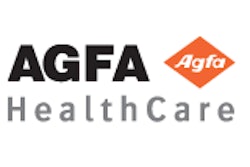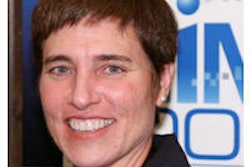CHICAGO - Optimizing workflow is a universal goal of any radiology department. Dashboards keep managers abreast of what's happening, but making comparisons is difficult because a standardized workflow lexicon doesn't exist. This will change with SWIM, according to a Monday scientific session at the RSNA meeting.
The SIIM Workflow Initiative in Medicine (SWIM) project, sponsored by the Society for Imaging Informatics in Medicine (SIIM), is defining a lexicon for workflow in radiology departments, imaging centers, and teleradiology services to allow accurate comparisons. With the digitization of the radiology department, the conversion to electronic health records (EHRs), and the increasing use of business intelligence analytic tools, being able to perform workflow analysis between or among departments and different medical entities is presumed.
But it shouldn't be, because no standardized lexicon exists to accurately compare, measure, and analyze workflow, said Dr. Bradley Erickson, PhD, professor of radiology at the Mayo Clinic in Rochester, MN. While it may seem incredulous, there is no common set of terms to describe workflow steps in radiology. Erickson likened the current situation to the days before DICOM was a standard to facilitate the transfer of image data from modalities. In the late 1980s and the early 1990s, interface engines to translate proprietary modality vendor data were a necessity.
"Jack Welch [the former CEO of GE] once said, ‘You can't manage what you can't measure.' I'd like to say that you can't measure what you can't describe," Erickson said.
Measurements cannot be performed accurately when there is no agreement on terminology. Workflow needs a language. The SWIM initiative, formerly part of the Transforming the Radiological Interpretation Process (TRIP) started in 2003, intends to provide a comprehensive lexicon of workflow definitions and key performance indicators that will become an international standard.
"Establishing a lexicon should allow for the leveraging of workflow management tools to improve the quality and efficiency of imaging departments," he said. "A workflow engine can allow for easier and better creation and maintenance of department rules. It can be used to identify efficiencies and inefficiencies, to model best practices, and to measure what impact changes in work processes are having."
The world of imaging informatics in a radiology department has become much more complex compared to when commercial RIS and PACS were being sold to early adopters. Since the early 1990s, 3D labs, mergers and acquisitions of radiology practices where one facility is covering multiple facilities, and cross-coverage by multiple practice entities have proliferated. It's no longer unusual for a hospital enterprise to have a network of multiple RIS and PACS.
The challenge of properly managing the data is only beginning to be recognized, Erickson said.
Progress to date
The SWIM project team, volunteers all, created a lexicon of about 100 workflow steps, or events, for a medical imaging department. Examples of workflow steps include scheduling an exam and notifying the patient of the exam. Seven key performance indicators were identified, based on workflow events such as report turnaround time, and status events such as a PACS being down.
To evaluate the completeness of the lexicon, a team headed by Christopher Meenan, director of clinical informatics at the University of Maryland Medical System, created a test dataset of approximately 17,000 examinations. The group populated time stamps for a subset of events based on the SWIM lexicon and used in the definition of the three key performance indicators selected for the test: report turnaround time, patient wait time, and examination volumes. The dataset also contained information about the modality and the facility. This would allow users of business intelligence tools developed for the test by Agfa HealthCare , GE Healthcare, and the University of Maryland team to perform subgroup analysis.
The demo and test took place in June 2011 at the SIIM annual meeting. The test dataset was hosted via SIIM's cloud-based infrastructure to provide remote access. A representational state transfer (REST)-style data provider service was created to provide access to the test dataset, and a query syntax was defined using JavaScript Object Notation (JSON).
A few missing elements were identified and added to the lexicon, but the test was very successful. It showed that the lexicon worked well in a vendor-neutral environment.
At a RadLex meeting held on Monday at this week's RSNA meeting, the workflow group proposed that the lexicon be added to the RadLex terms. Erickson hopes the lexicon will be included in the next RadLex release.
SIIM recently awarded a grant that will study the coverage of the lexicon within one academic department. Further studies focusing on coverage in areas such as interventional radiology, cardiology, and surgery will be evaluated. A process of vetting new terms is also being implemented.
Early discussions are also being initiated with Integrating the Healthcare Enterprise (IHE), as well as efforts to attract the interest of vendors.
"But we are pleased with the progress we've made," Erickson concluded. "The SWIM project has taken an important first step. It now must be validated for clinical practices and implemented in commercial products."



















